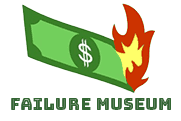Founded in 1999, TiVo was a digital video recorder that optimized TV watching. Users could find and record shows that match their interests by title, actor, director, category, or keyword. The TiVo could store far more shows — hundreds of hours in most cases — since the hard drive is much more efficient than an old cassette tape.
However, TiVo soon had to face intense competition from cable and satellite TV providers who introduced their own DVR services with similar functionalities. Plus, Netflix, Hulu, Amazon Prime Video, Hotstar, and other streaming platforms created a whole new customer segment. Consumers now had access to on-demand content that they can stream anytime, anywhere. In addition, they failed to innovate their product offerings.











